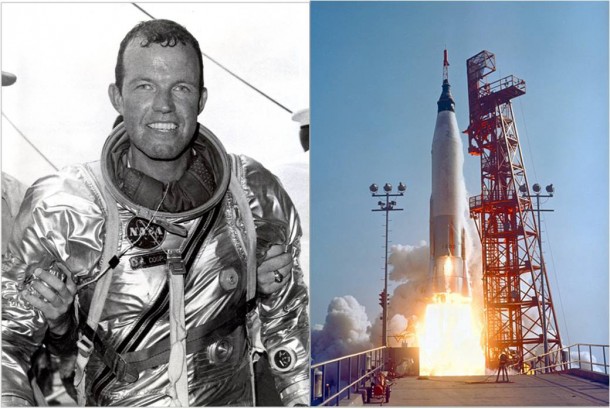
Fifty-one years ago today, NASA Astronaut Leroy Gordon Cooper was successfully launched into Earth orbit to begin a 22-orbit mission lasting 34 hours. Designated Mercury-Atlas No. 9 (MA-9), Cooper’s flight was the final orbital space mission of the fabled Mercury Program.
Cooper’s eventful space mission began with lift-off from Cape Canaveral’s LC-14 at 13:04 hours UTC on Wednesday, 15 May 1963. Splashdown of his Faith 7 spacecraft occurred 70 miles southeast of Midway Island in the Pacific Ocean on Thursday, 16 May 1963. Mission total elapsed time was 34 hours 19-minutes 49-seconds.
While the first 19 orbits of the MA-9 mission were mostly unremarkable, the final three orbits severely tested Cooper’s mettle and piloting skills.
By the time that he manually initiated ripple-firing of the retro motors at the end of the 22nd orbit, Cooper was flying a dead spacecraft. The electrical system was not functioning, the environmental control system was saturated with carbon dioxide, and even the mission clock was inoperative. Temperatures in the spacecraft exceeded 130F.
Cooper had to align his spacecraft for retro-fire using the horizon as a reference, used a watch for timing, and manually operated the reaction control system to counter dangerous spacecraft oscillations during the retro burn.
Cooper also manually controlled Faith 7 during entry and initiated deployment of the drogue and main parachutes.
Incredibly, Cooper landed within 5 miles of the recovery ship USS Kearsarge. In so doing, he established the record for the most accurate landing in the Mercury Program. Gordon Cooper was the last American astronaut to orbit the Earth alone.
